Stop Eye Strain! 5 Best Blue Light Glasses for Gamers
Spending long hours gaming or working in front of digital screens exposes your eyes to harmful blue light.
This exposure can lead to eye strain, headaches, fatigue, and disrupted sleep patterns. Blue light blocking glasses designed specifically for gaming offer an effective solution by filtering out the most damaging blue light wavelengths.
They not only protect your eyes but also improve visual comfort, helping you focus better and play longer without discomfort.
With many options available, choosing the right gaming glasses can be challenging. This guide will help you understand what features matter and which models stand out in 2025 for the best eye protection and performance during your gaming sessions.
Table of Contents
ToggleGUNNAR Intercept Gaming and Computer Glasses Review
I spend 8 to 11 hours a day in front of screens for work and gaming. Over time, I got used to red, itchy, and watery eyes, thinking it was normal. When I tried GUNNAR Intercept glasses, I was surprised by how much better my eyes felt.
The glasses come with a solid case and a microfiber cloth. The frame quality is about 8 out of 10—comfortable and durable, though not quite luxury-level.
They fit my square face well and feel lightweight during long hours.
Right away, I noticed a slight yellow tint in the lenses. It’s subtle but noticeable. My wife even joked that I looked like I had mild jaundice. The color shift is gentle, so it does not affect how I see my screen or games.
After a week of use, whether reading text or playing video games, my eyes felt less strained. Redness and discomfort dropped significantly.
One night I forgot to wear them for 45 minutes and quickly felt the difference my eyes tired faster without the glasses.
These glasses block 65% to 98% of harmful blue light at 450nm, which really helps reduce headaches, migraines, and dry eyes. They don’t magnify or alter vision, but glare from some lights inside can be a bit distracting.
Overall, these are excellent non-prescription blue light blocking glasses for anyone spending long hours on computers or gaming.
The protection and comfort make a noticeable difference. I wish I had found them sooner.
If you struggle with digital eye strain, GUNNAR Intercept glasses are worth trying. They offer clear benefits without breaking the bank. Feel free to ask me any questions about my experience.
Pros
-
Effectively blocks 65% to 98% of harmful blue light
-
Lightweight and comfortable for long use
-
Comes with a solid case and cleaning cloth
-
Reduces eye strain, headaches, and dry eyes
-
Suitable for both gaming and work screens
Cons
-
Slight yellow tint may be noticeable
-
No anti-glare coating on the inside lens causing some glare
-
Not high-end luxury frame quality
-
Some glare under certain indoor lighting conditions
GUNNAR Premium Gaming and Computer Glasses Review
I spend 5 to 11 hours a day in front of screens, both for work and gaming. Over time, I got used to red, itchy, and watery eyes, thinking it was normal.
When I started using GUNNAR Riot glasses, I noticed a real difference in comfort.
The glasses come in a sturdy case with a microfiber cleaning cloth included. The frame quality feels solid, about 8 out of 10. They fit my square-shaped face well and are lightweight, so I can wear them all day without discomfort.
Right away, I noticed the lenses have a slight yellow tint. It’s subtle but noticeable. My wife even joked that I looked like I had mild jaundice. This tint slightly warms the screen colors but doesn’t affect my viewing experience negatively.
After using the glasses for a week, whether staring at white or dark screens, or playing video games, my eyes felt less strained.
Redness and dryness reduced a lot. One evening I forgot to wear them for 45 minutes and felt the eye fatigue return quickly.
GUNNAR’s patented lens technology blocks a significant amount of harmful blue light, protecting eyes from strain, headaches, and blurry vision.
The glasses also have dual-sided anti-reflective coatings that reduce glare and reflections, though I noticed some glare from certain indoor lights.
Overall, these are excellent non-prescription blue light blocking glasses for gamers and anyone who spends long hours in front of screens. The protection, comfort, and build quality make them a great investment. I wish I had known about them earlier.
If you want to reduce digital eye strain and protect your vision, GUNNAR Riot glasses are worth trying. Feel free to ask if you want to know more about my experience.
Pros
-
Doctor-recommended patented blue light blocking technology
-
Blocks harmful blue light effectively
-
Comfortable, lightweight frame
-
Includes cleaning cloth and sturdy case
-
Dual-sided anti-reflective coating reduces glare
Cons
-
Slight yellow tint in lenses noticeable
-
Some glare indoors from certain light angles
-
Frame quality good but not premium luxury level
Horus X Gaming Glasses Review: Effective Blue Light Blocking for Reduced Eye Strain and Better Comfort
I spend about 8 to 11 hours a day in front of screens for both work and gaming. Over time, my eyes would get red, itchy, and tired, and I thought this was just normal. That changed when I started using Horus X gaming glasses.
The glasses come with a solid, lightweight case and a microfiber cleaning cloth, which is a nice bonus. The frame quality feels good, around 8 out of 10 for me.
They fit my square-ish face comfortably and are very light, which makes wearing them with a headset easy.
When I put them on, I noticed a slight yellow tint in the lenses. It’s subtle but enough for my wife to joke that I look a bit jaundiced.
I don’t mind the small change in color because it doesn’t affect my gaming or screen work negatively.
In the past week, I wore these glasses while reading text on bright and dark screens, playing video games, and watching videos.
Even after long sessions, my eyes felt less strained and less red. One night, I forgot to wear them and felt eye fatigue return within 45 minutes.
These glasses use patented plasma technology that blocks 100% of blue light from 380 to 400nm and 86% from 380 to 450nm.
They also provide full UV protection and have anti-reflective coatings, although I did notice some glare inside from certain lighting angles.
Overall, Horus X glasses deliver excellent relief from eye strain and fatigue. If you spend long hours in front of screens, these are definitely worth trying.
I wish I had discovered them sooner. If you have questions or want to discuss blue light glasses, feel free to reach out.
Pros 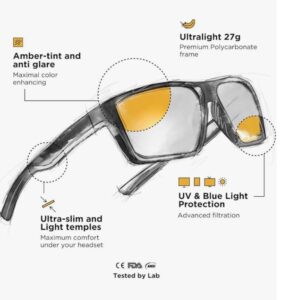
-
Blocks a high percentage of harmful blue light
-
Lightweight and comfortable frame
-
Includes a sturdy case and cleaning cloth
-
Provides full UV protection
-
Anti-reflective coated lenses
Cons
-
Slight yellow tint visible on lenses
-
Some glare under certain indoor lighting
-
No anti-glare coating on the inside of lense
I spend 8 to 11 hours daily in front of screens, both for work and fun. Over time, my eyes became red, itchy, and tired, which I thought was just part of the routine.
I decided to try Maxjuli Blue Light Blocking Glasses, hoping for some relief. The glasses arrived with a sturdy case and a cleaning microfiber, showing they care about quality.
The frame feels solid and lightweight, perfect for long hours of wear. They fit my square face well and feel comfortable without any tight spots.
Right away, I noticed a slight yellow tint in the lenses. It is subtle enough that it doesn’t drastically change colors but offers a calming effect on my eyes.
Using these glasses while working on both white and black screen backgrounds, as well as gaming and watching videos, my eyes felt much less strained. The redness and itchiness significantly reduced.
One night I forgot to wear them, and after just 45 minutes, my eyes quickly felt tired and dry again. That was a clear sign they work.
I appreciate that these glasses are non-prescription and suit anyone, with or without vision correction. The lenses offer good clarity without any magnification.
The only downside is the lack of an anti-glare coating inside the lenses. Sometimes, reflections can be distracting depending on the light source.
Overall, Maxjuli delivers lightweight, durable, and effective blue light blocking glasses. If you want to protect your eyes from screen strain and improve sleep quality, these glasses are a smart choice.
Feel free to reach out if you want to discuss eye care and screen protection tips. Your eyes deserve the best defense against digital strain.
-
Lightweight and comfortable for long use
-
Solid frame quality with flexible materials
-
Effective blue light blocking reduces eye strain and redness
-
Non-prescription and suitable for all users
-
Includes case and cleaning microfiber cloth
Cons:
-
Slight yellow tint may alter color perception
-
No anti-glare coating inside lenses, causing occasional reflections
-
Not as premium in build quality as high-end brands
WinToo Blue Light Blocking Glasses Review: Effective Eye Protection for Long Screen Hours
I spend around 8 to 11 hours daily using screens for work and entertainment. Over time, my eyes became red, itchy, and strained. I thought it was normal until I tried WinToo Blue Light Blocking Glasses.
These come in a set of five pairs, which is perfect for having extras around the house or office. Each pair includes a hard case, soft case, and cleaning cloth, making them easy to maintain.
The square frames fit my face well and look stylish whether I’m at home or in meetings. The lightweight design made them comfortable for all-day wear without any pressure on my nose or ears.
At first, I noticed a slight yellow tint in the lenses. It’s subtle and doesn’t distort colors much, but it does help reduce the harshness of blue light. My wife even joked that I looked a bit jaundiced while wearing them.
Using these glasses, my eyes felt much less tired even after long hours staring at bright white or dark screens. The usual redness and dryness have decreased significantly.
One evening I forgot to wear them, and within 45 minutes, my eyes quickly started to feel strained again. That confirmed how well these glasses protect against digital eye strain.
The lenses provide clear vision without magnification, which is great. However, there is some glare from certain angles, likely due to the lack of an anti-glare coating inside the lenses.
Overall, WinToo offers affordable, durable, and effective blue light blocking glasses for men and women. They reduce eye strain and protect your vision during extended screen time.
If you want to discuss more about eye care or find the right glasses, feel free to reach out. Protecting your eyes is essential in today’s screen-heavy world.
-
Comes with five pairs for extra convenience
-
Stylish square frames suitable for all occasions
-
Lightweight and comfortable for long wear
-
Reduces eye strain and redness effectively
-
Includes hard and soft cases plus cleaning cloth
Cons:
-
Slight yellow tint may affect color perception
-
No anti-glare coating inside lenses, causing some glare
-
Frame quality good but not premium brand level
How Blue Light Blocking Glasses Are Made
1. Design and Frame Selection
The production of blue light blocking glasses begins with designing the frames. Manufacturers use computer-aided design (CAD) software to create stylish and ergonomic frames that appeal to consumers. Frames are typically made from materials like acetate, polycarbonate, titanium, or stainless steel, chosen for durability, lightweight properties, and aesthetic appeal.
-
Material Choice: Acetate is popular for its flexibility and vibrant color options, while titanium is favored for its strength and hypoallergenic properties.
-
Mold Creation: Once the design is finalized, molds are created for mass production. These molds are used to shape the frame material through injection molding or cutting techniques.
2. Lens Material Selection
The lenses are the core component of blue light blocking glasses, as they are responsible for filtering blue light. Most lenses are made from polycarbonate or high-index plastic due to their lightweight nature, impact resistance, and optical clarity.
-
Polycarbonate: Commonly used for its durability and affordability, polycarbonate is ideal for everyday wear.
-
High-Index Plastic: Used in premium lenses, high-index plastic is thinner and lighter, suitable for higher prescriptions.
3. Blue Light Filtering Technology
The blue light filtering capability is achieved through coatings or tints applied to the lenses. There are two primary methods:
-
Coatings: A thin, multi-layered coating is applied to the lens surface using vacuum deposition or sputtering techniques. These coatings selectively reflect or absorb blue light wavelengths (typically 400–450 nm).
-
Tints: Some lenses are infused with pigments or dyes during the manufacturing process to absorb blue light. This method often results in a slight yellow or amber tint.
The coating or tint is carefully calibrated to block a specific percentage of blue light (usually 20–40%) while allowing other wavelengths to pass through, ensuring minimal color distortion.
4. Lens Shaping and Cutting
Once the lens material is selected and treated, the lenses are cut and shaped to fit the frame design. This process involves:
-
Precision Cutting: Automated machines use the frame’s measurements to cut lenses into the exact shape and size.
-
Edging: The edges of the lenses are polished to ensure a smooth fit within the frame and to enhance comfort for the wearer.
5. Assembly
The lenses are then inserted into the frames. Depending on the frame type (full-rim, semi-rimless, or rimless), this may involve:
-
Snapping Lenses into Place: For full-rim frames, lenses are pressed into the frame’s grooves.
-
Screwing or Gluing: Rimless or semi-rimless frames require screws or adhesive to secure the lenses.
Nose pads and temple tips are added for comfort, and hinges are attached to ensure the glasses can fold properly.
6. Quality Control
Before packaging, the glasses undergo rigorous quality checks. Tests include:
-
Blue Light Blocking Efficiency: Spectrophotometers measure the percentage of blue light blocked by the lenses.
-
Optical Clarity: Lenses are inspected for distortions or imperfections.
-
Frame Durability: Frames are tested for flexibility and resistance to wear.
7. Packaging and Distribution
Once approved, the glasses are cleaned, packaged with protective cases, and shipped to retailers or directly to consumers.
Materials That Block Blue Light
Blue light blocking glasses rely on specific materials and technologies to filter harmful wavelengths. The primary materials include:
1. Lens Materials
-
Polycarbonate: A durable, lightweight plastic that serves as the base for most blue light blocking lenses. It can be coated or tinted to block blue light.
-
High-Index Plastic: Thinner and lighter than polycarbonate, used in premium lenses with similar blue light filtering capabilities.
-
CR-39 (Allyl Diglycol Carbonate): A lightweight resin used in some prescription lenses, which can also be coated for blue light protection.
2. Blue Light Filtering Coatings
-
Anti-Reflective (AR) Coatings: These coatings include layers designed to reflect blue light away from the lens surface. They are applied using advanced techniques like physical vapor deposition (PVD).
-
Blue Light Absorbing Layers: Some coatings absorb blue light rather than reflecting it, reducing glare and eye strain.
3. Tints and Dyes
-
Yellow or Amber Tints: These tints are created by adding pigments to the lens material during manufacturing. They absorb blue light but may slightly alter color perception.
-
Melanin-Based Pigments: Some lenses use synthetic melanin, which mimics the eye’s natural pigment to filter blue light and UV rays.
4. Additional Materials
-
UV-Blocking Additives: Many blue light blocking lenses also block ultraviolet (UV) light, using additives like UV stabilizers.
-
Scratch-Resistant Coatings: Applied to protect the lenses from wear and tear, these coatings enhance durability without affecting blue light filtering.
Do Blue Light Blocking Glasses Help with Gaming?
Yes, blue light blocking glasses can be very helpful for gamers, especially those who spend long hours in front of screens. Gaming involves prolonged exposure to digital devices like computers, laptops, and consoles, which emit high levels of blue light.
This blue light is part of the visible light spectrum and has a short wavelength that can penetrate deep into your eyes, causing strain and discomfort.
When you play video games for hours, your eyes work harder to focus on fast-moving images and bright screens.
This constant strain often leads to symptoms such as dry eyes, headaches, blurred vision, and even fatigue, commonly known as digital eye strain.
Blue light blocking glasses filter out a significant portion of the harmful blue light emitted by screens, reducing its impact on your eyes.
By reducing blue light exposure, these glasses help minimize eye fatigue and irritation, allowing gamers to maintain better focus and comfort during intense or extended gaming sessions.
Many users report fewer headaches and less squinting, which directly improves concentration and performance in games.
Additionally, blue light blocking glasses can improve sleep quality, which is crucial for gamers who play late into the evening.
Exposure to blue light before bedtime suppresses melatonin production, the hormone responsible for regulating sleep.
Wearing these glasses can help maintain a healthy circadian rhythm, making it easier to fall asleep and wake up refreshed.
In summary, blue light blocking glasses offer practical benefits for gamers by protecting eye health, reducing digital eye strain, enhancing visual comfort, and supporting better sleep.
For anyone serious about gaming or spending many hours in front of screens, investing in quality blue light blockers is a smart choice.
How to Make DIY Blue Light Blocking Glasses
Creating your own blue light blocking glasses at home is a cost-effective alternative to purchasing commercial versions. While DIY glasses may not match the precision of professionally manufactured ones, they can still provide some protection. Here’s a step-by-step guide:
Materials Needed
-
A pair of inexpensive clear-lens glasses (e.g., reading glasses or safety glasses)
-
Yellow or amber transparent film (available online or at craft stores)
-
Scissors or a craft knife
-
Rubbing alcohol and a microfiber cloth
-
Clear adhesive (e.g., double-sided tape or craft glue)
-
Optional: Blue light testing kit (to verify effectiveness)
Steps
-
Choose Your Base GlassesSelect a pair of clear-lens glasses with a comfortable fit. Ensure the lenses are free of scratches or coatings, as these may interfere with the DIY process. Reading glasses from a dollar store or safety glasses work well.
-
Clean the LensesWipe the lenses with rubbing alcohol and a microfiber cloth to remove dirt, oils, or smudges. This ensures the film adheres properly.
-
Cut the Yellow/Amber Film
-
Trace the shape of each lens onto the yellow or amber film using a marker.
-
Carefully cut out the shapes with scissors or a craft knife, ensuring they match the lens size precisely.
-
Tip: Cut slightly smaller than the lens to avoid overhang.
-
-
Apply the Film
-
Peel off any protective backing from the film.
-
Use clear adhesive (e.g., double-sided tape or a thin layer of craft glue) to attach the film to the lens surface.
-
Press gently to remove air bubbles and ensure a smooth application.
-
If the film is self-adhesive, simply stick it directly onto the lens.
-
-
Trim Excess Film Use a craft knife to trim any excess film around the edges for a clean look.
-
Test the Glasses
-
Wear the glasses while looking at a digital screen to check for a slight yellow tint, which indicates blue light filtering.
-
Optional: Use a blue light testing kit (available online) to measure the effectiveness. These kits typically include a blue light source and a card that changes color when blue light is blocked.
-
-
Adjust for Comfort Ensure the glasses fit comfortably. If the frames are loose, tighten the screws or adjust the temples. Add nose pads if needed.
Tips for Success
-
Film Quality: Choose high-quality, transparent yellow or amber film designed for optical use to minimize distortion.
-
Limitations: DIY glasses may not block as much blue light as commercial versions (typically 10–20% vs. 20–40%). They are best for light use.
-
Safety: Avoid using DIY glasses for tasks requiring precise color accuracy, as the tint may alter perception.
Safety Considerations
-
Ensure the film does not obstruct your vision or cause discomfort.
-
If you wear prescription glasses, consult an optometrist before modifying them.
-
DIY glasses are not a substitute for professional eye protection or medical advice.
Blue light blocking glasses are crafted through a combination of advanced lens technology and durable frame materials. Polycarbonate or high-index plastic lenses, paired with specialized coatings or tints, effectively filter blue light while maintaining optical clarity.
For those interested in a budget-friendly option, DIY blue light blocking glasses can be made using clear-lens glasses and yellow/amber film, though they offer limited protection compared to commercial products.
Whether purchasing or crafting your own, blue light blocking glasses can help reduce eye strain and improve comfort in our screen-dominated world.
FAQs: Best Blue Light Blocking Glasses for Gaming
1. Can blue light blocking glasses improve my gaming performance?
Yes. By reducing eye strain and fatigue, these glasses help maintain focus and reduce discomfort during extended gaming sessions, which can enhance your overall performance.
2. What color lenses are best for gaming?
Amber or yellow-tinted lenses block more blue light and reduce glare, making them popular for gamers. However, clear lenses with blue light filtering can also be effective if you prefer natural color perception.
3. Are blue light blocking gaming glasses worth it?
Absolutely. They protect your eyes from harmful blue light, reduce headaches, and improve sleep quality, especially if you spend several hours daily in front of screens.
4. Can I wear gaming glasses if I already use prescription glasses?
Yes. Many blue light blocking glasses come with removable lenses or clip-ons designed to fit over prescription glasses.
5. Can I use blue light blocking glasses outdoors?
Most gaming glasses also offer UV protection, so they can be worn outside. However, dedicated sunglasses might be better for bright outdoor use.
Conclusion
Choosing the best blue light blocking glasses for gaming means prioritizing comfort, effective blue light filtration, and style.
Look for glasses with the right lens color, size, and frame features that suit your gaming setup and personal preferences. Proper eye protection can reduce strain and headaches, allowing you to game longer and sleep better afterward.
With the variety of options available, finding a pair that fits your needs is easier than ever. Protect your eyes and elevate your gaming experience by investing in high-quality blue light blocking glasses today.



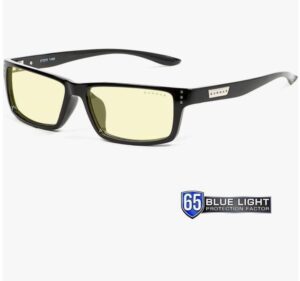
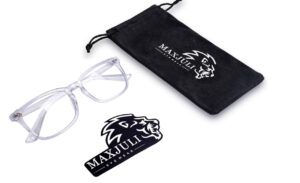
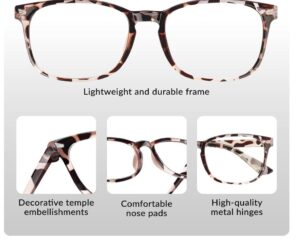

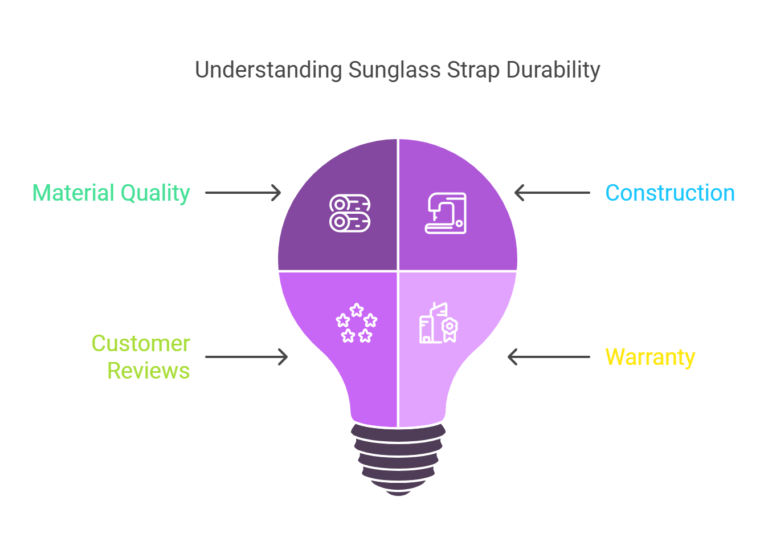
![Top 10 Gaming Glasses That Help Prevent Migraines [2025 Buying Guide]](https://homedigitized.com/wp-content/uploads/2025/07/pink-hair-girl-avantgarde-style-wearing-sunglasses-768x512.jpg)